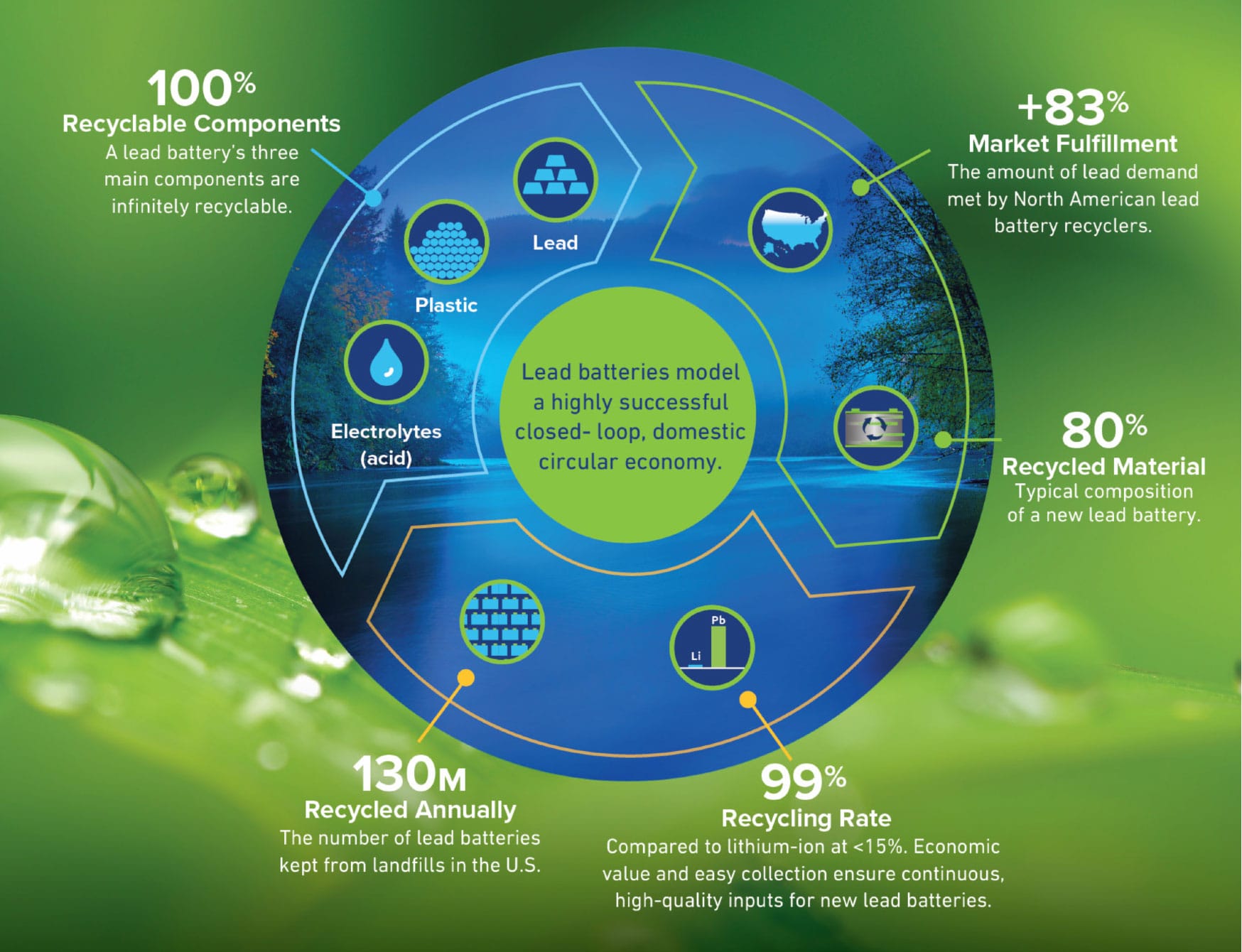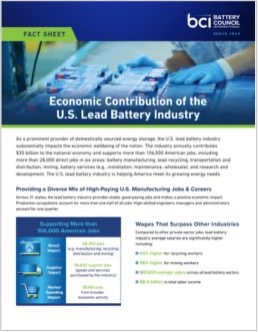
Inflation concerns may be occupying headlines, but one business sector has good economic news. A new study shows the U.S. lead battery industry is thriving – and making an impressive economic contribution.
Commissioned by Battery Council International (BCI), the study reveals the U.S. lead battery industry makes a $32.9 billion overall annual economic impact to the nation and a $13.7 billion contribution to the GDP. The report, titled “Economic Contribution of the U.S. Lead Battery Industry in 2021,” was prepared by EBP US using the most current data available.
Diverse Mix of High-Paying Manufacturing Jobs and Careers
As a prominent provider of domestically sourced energy storage, the lead battery industry is helping the U.S. to meet its electrification goals with sustainable, reliable, and secure energy storage. Collectively, the industry also positively impacts the economic wellbeing of the nation, providing $8.5 billion in labor income and $2.96 billion in government revenue
Other facts from the study include detailed employment information compiled from U.S. lead battery manufacturers and recyclers:
- Supporting more than 121,000 American jobs
- Direct jobs in six areas:
- Battery manufacturing
- Transportation and distribution
- Lead recycling
- Mining
- Battery services (installation, maintenance, wholesale)
- Research and development
- High wages

The lead battery industry pays high wages relative to other industry sectors. Average payroll-per-worker across all U.S. battery sectors is $81,000. This is higher than salaries in professional services, retail and wholesale trade, construction and maintenance, and agriculture.
Supporting a Low Carbon Future
The industry is a source of jobs for modern manufacturing and plays a critical role in helping our country meet aggressive decarbonization goals. The technology is a major source of energy storage for the electrification of transportation and renewable energy.
The industry supplies 50% of global energy storage needs, including for renewable energy. And nearly all hybrid and full-electric vehicles use a lead battery for critical functions. Hybrids and other forms of HEVs employ start-stop technology enabled by lead batteries to reduce greenhouse gas emissions by 6.7 million tons annually in the U.S. And, lead batteries provide a highly sustainable, domestically sourced energy storage solution to rapidly deploy fast charge stations for EVs.
Investing in Innovative Solutions
Supporting new technologies and applications for lead batteries requires a commitment to constant innovation. In 2021 alone, the lead battery industry invested over $112.8 million in R&D to continue meeting the rapidly changing needs within transportation, renewable energy, communications, and many other sectors.
The lead battery industry is also a reliable partner for collaborative private and public research partnerships. Major lead battery manufacturers and suppliers are currently partnering with the U.S. Department of Energy’s Argonne National Laboratory, Pacific Northwest National Laboratory, universities and other institutions to research — and further advance — lead battery performance and energy storage applications.

Strong Domestic Infrastructure Creates a Resilient Circular Economy
Through a coast-to-coast network of manufacturing, distribution, recycling and research, the lead battery has built a model of sustainable manufacturing across 38 states. The cradle-to-cradle circular economy of lead batteries puts them at the top of environmentally sustainable consumer products:
- A 99% lead battery recycling rate in the U.S.
- 130+ million lead batteries kept from landfills annually.
- More than 83% of lead is sourced from North American recycling facilities.
- A typical lead battery is comprised of 80% recycled material.
A Thriving U.S. Lead Battery Industry
As the BCI study confirms, the U.S. lead battery industry generates economic impacts which ripple throughout the national economy, supporting a wide range of jobs in every major area of the U.S.
Whether starting a car, storing power from a solar panel, or providing emergency backup power, lead batteries will continue to touch every aspect of American life.






